Travel in Izu Kawazu
The coastal town of Kawazu on the Izu Peninsula, Shizuoka Prefecture, seems to have it all: stunning waterfalls to hike, a river lined with Kawazu-zakura cherry blossoms in spring, wide beaches great for surfing and diving, and to top it off, outdoor hot springs overlooking impressive vistas. The proximity between the mountains and the ocean, onsen and the clear water cascading down the valley make Kawazu a hidden gem for outdoor enthusiasts.
Kawazu’s Seven Falls
Kawazu’s most famous attraction is Nanadaru Falls, the seven waterfalls at the foot of the Amagi Mountains just above the town that received two stars from the Michelin Green Guides. These falls formed when a volcano called Noboriominami erupted approximately 25,000 years ago, creating dramatic rock formations by rivers, cliffs and beaches in the region, hence Izu Peninsula’s dramatic landscape.
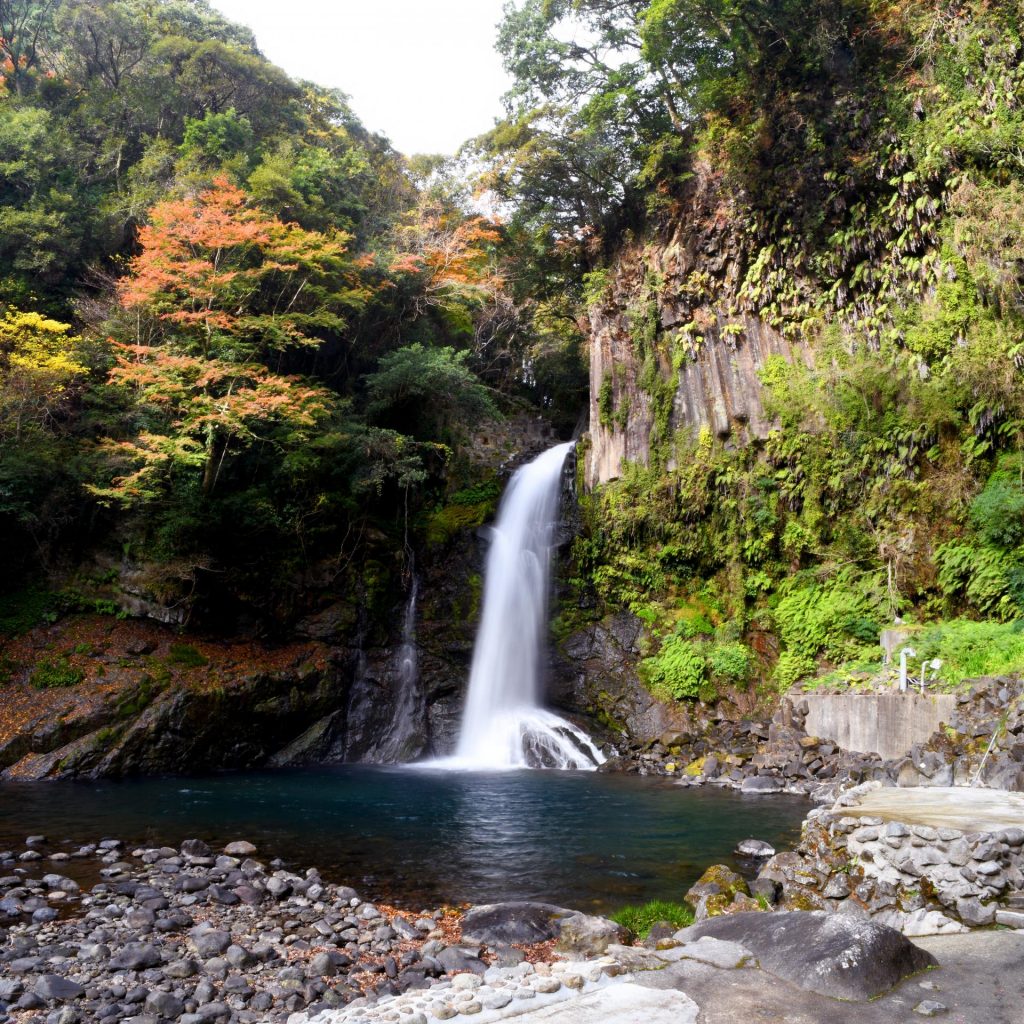
In Kawazu, you can enjoy the rare experience of relaxing in an onsen right in front of a majestic waterfall. The impressive 30-meter Odaru Falls at the base of Nanadaru Falls is part of Nanadaru Onsen. Guests can use the waterfall onsen, underground baths and private indoor baths.
To see the other waterfalls, follow an easy one-kilometer walking trail. Along the way, you’ll find statues depicting the heroine from Yasunari Kawabata’s short novel “Izu no Odoriko” which is set in this area.
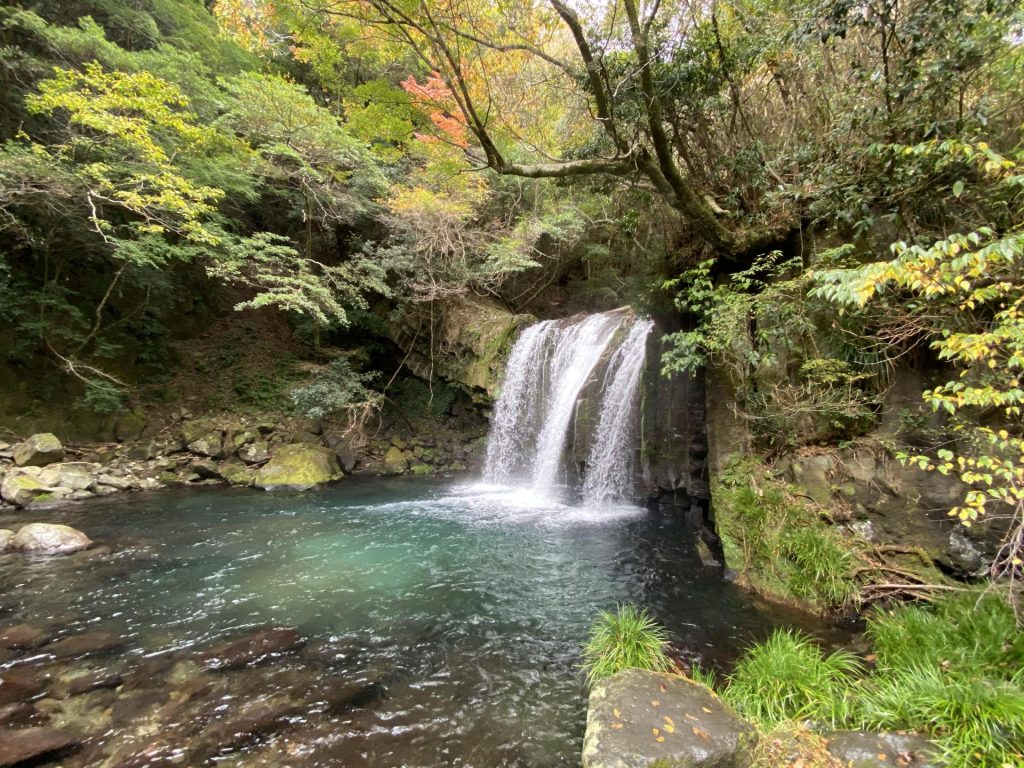
If you’re driving or taking the bus to these falls, you’ll most likely use the Kawazu Nanadaru Loop Bridge, an imposing and dizzying spiral bridge along National Route 414 high above the valley floor.
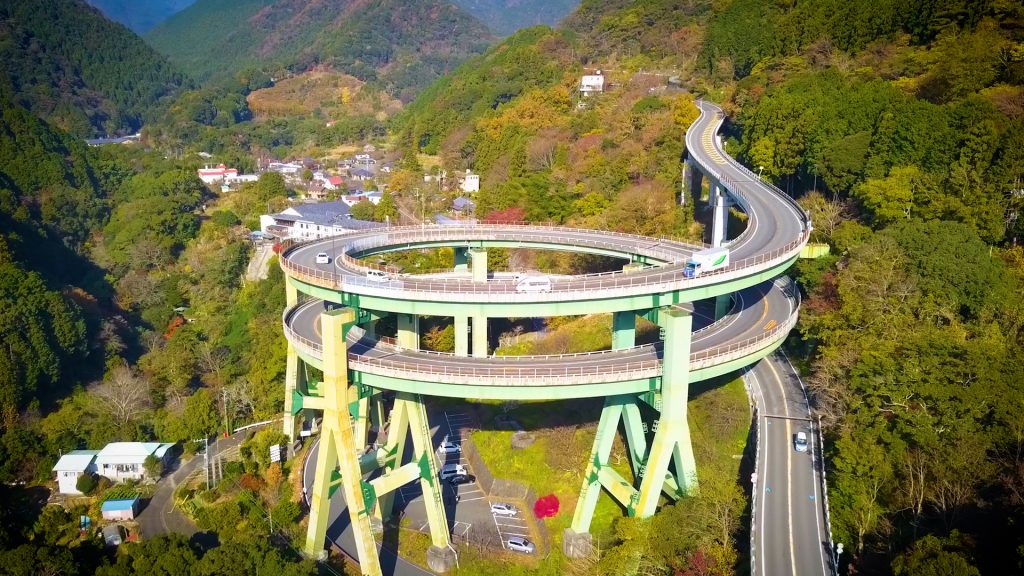
You can take the bus to Odaru Iriguchi or Mizudare, although it’s recommended to start at Mizudare and make your way down to Odaru Iriguchi where most of the shops are.
The start of the walking trail from Odaru Falls is lined with wasabi and soba (buckwheat noodle) shops. The region produces high-quality wasabi (Japanese horseradish) thanks to Kawazu’s clear running mountain water.
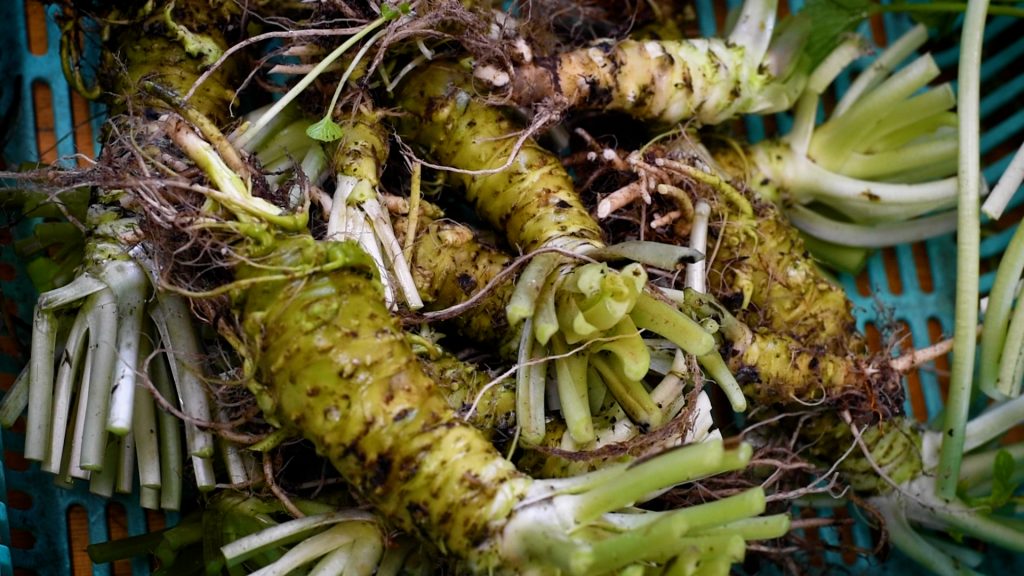
“Water gives life to wasabi,” says Nobuaki Inaba, a wasabi farmer and owner of Wasabi-en Kadoya, popular for its wasabi–don (a simple yet surprisingly delicious dish of rice topped with bonito flakes and local wasabi). “You can’t grow good wasabi without clean water and abundant nature. Wasabi thrives here because of the nutrients in our rivers.”
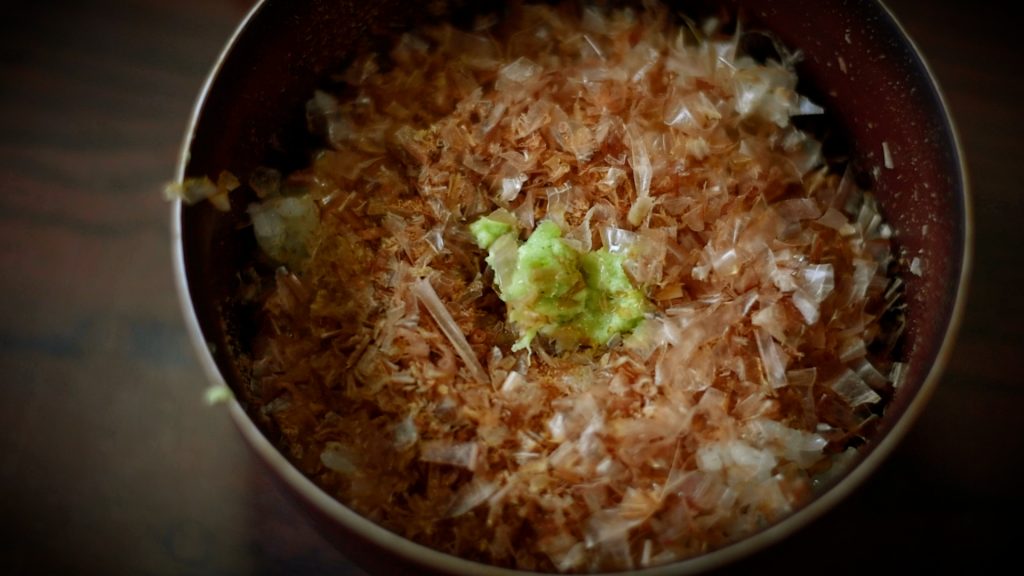
Kawazu stays warm through to the end of October, but stays relatively subtropical year round. Visit early to mid-December for kouyou (autumn leaves changing color). The coldest months are in January and February, which is when you can see the Kawazu-zakura cherry blossoms. The waterfalls are best viewed at end of May to June during rainy season when water levels are high.
“One of the best things about living in Kawazu is that you can really experience the seasons,” says Shoji Suzuki, owner of Aoki-no-Saka Ryokan Inn at the base of the loop bridge. Suzuki and his wife enjoy Kawazu’s nature year round, whether it’s surfing at Imaihama Beach or hiking in the mountains. “It’s a place where the mountains, rivers and ocean come together.”
To get even closer to Kawazu’s waterfalls, Kura-Run Outdoors offers canyoning tours in a tributary of the Kawazu River. Although they only offer one course, this tour is a series of fun natural slides and small waterfalls. Tours are available from end of May to October.
Beaches at Kawazu
Imaihama Beach is said to be one of the most beautiful shoal beaches in Izu. It’s only a two-minute walk from Imaihama Kaigan Station and near many ryokans. Imaihama is a shallow beach break with mixed sand and reef. There are waves year round but especially during spring to autumn. Surf shops like Soul Surf provide board rentals and lessons.
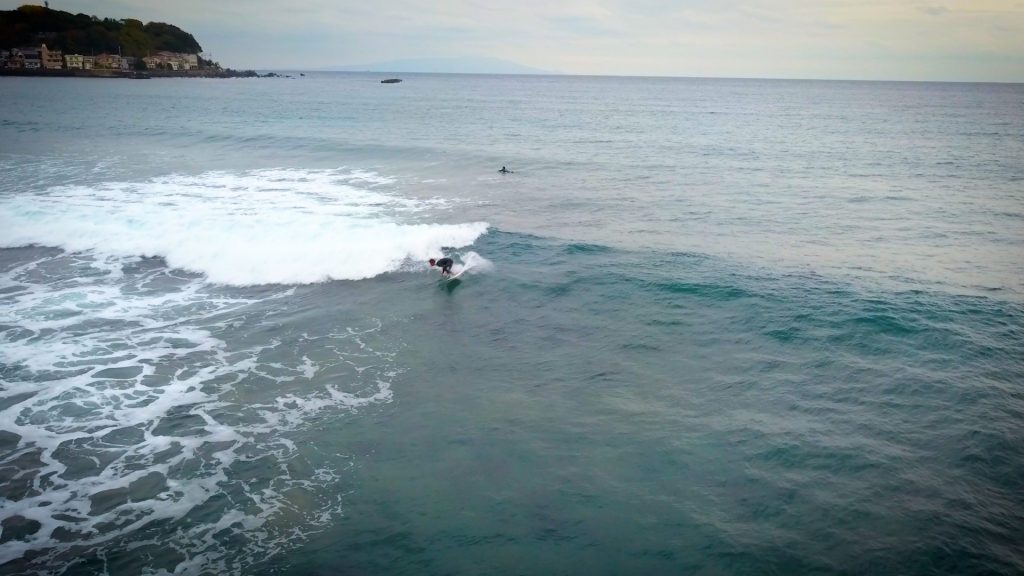
Even if you’re not staying at Imaihama, set aside an hour or so for Funado no Banya, an outdoor rotenburo bath overlooking the ocean. It is not big, but its views make people feel as if they are floating in the sea. At the base, there is a barbecue facility and ingredients such as local seafood.
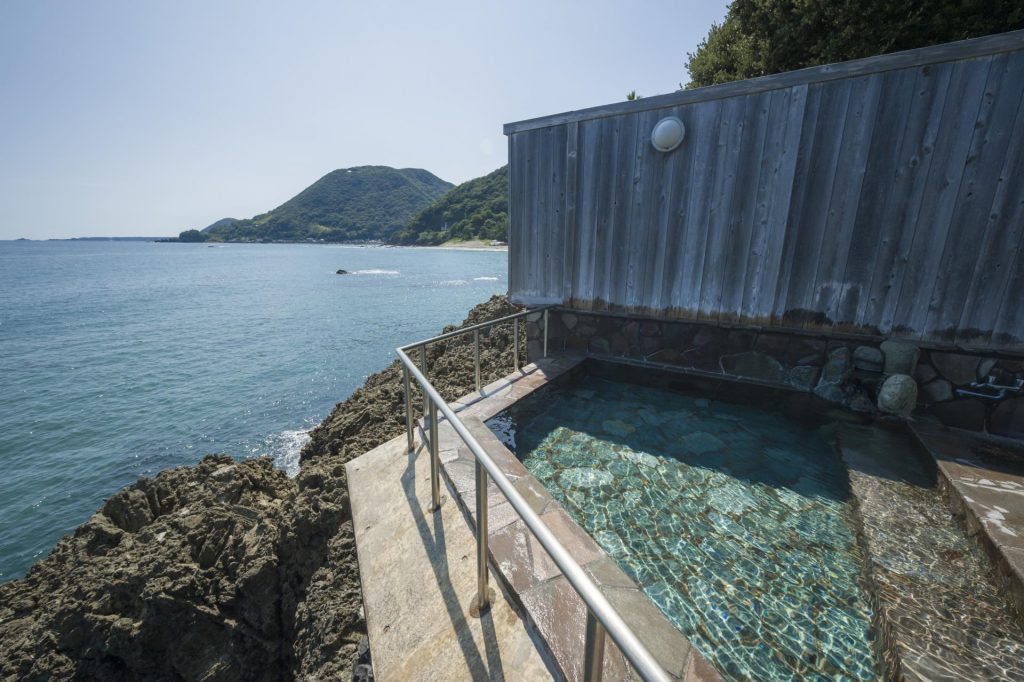
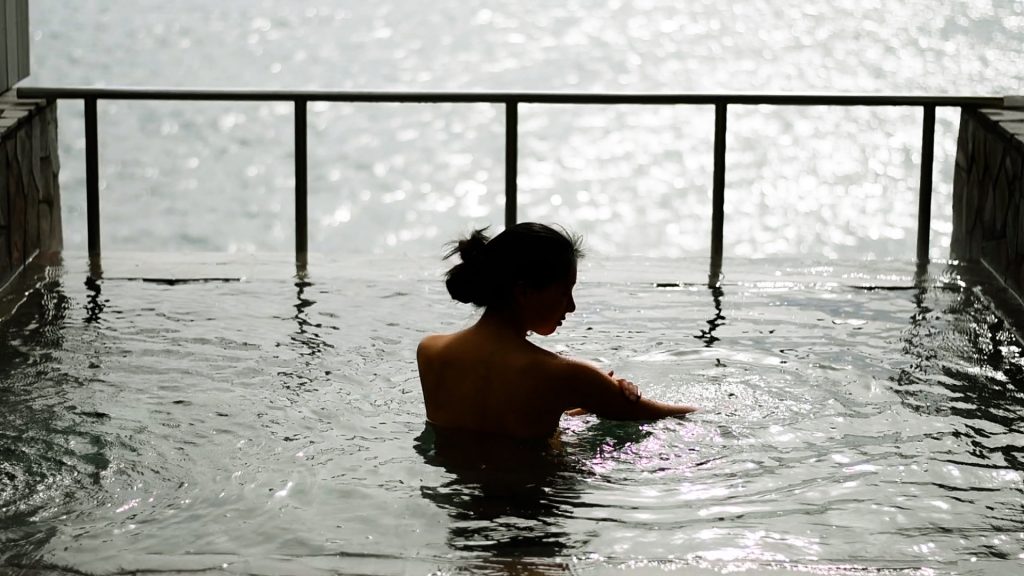
As for nightlife, drop by Anagura, a unique bar built into a cave once used for mining stones for building the Edo Castle in Tokyo. The smaller Kawazuhama Beach is not as crowded with quiet, shallow waters good for swimming. It makes up for its lack of size with high-quality clear water, and is only a three-minute walk from Kawazu Station.
Further south, Shobuzawa Diving Center offers diving and snorkeling tours. Divers can enjoy wreck diving and see Ise-ebi lobsters, nudibranch, catsharks, sturgeons, stingrays, Japanese butterfish and schools of wrasses and horse mackerels. Night dives, beginner-friendly dives and snorkeling tours are also available.
Getting There
Kawazu sits on the southeastern coast of the Izu Peninsula in Shizuoka Prefecture and is a three-hour drive or train ride from Tokyo. While the locals take pride in the Kawazu-zakura that attract thousands every February, Kawazu can be enjoyed year round over three to four days.
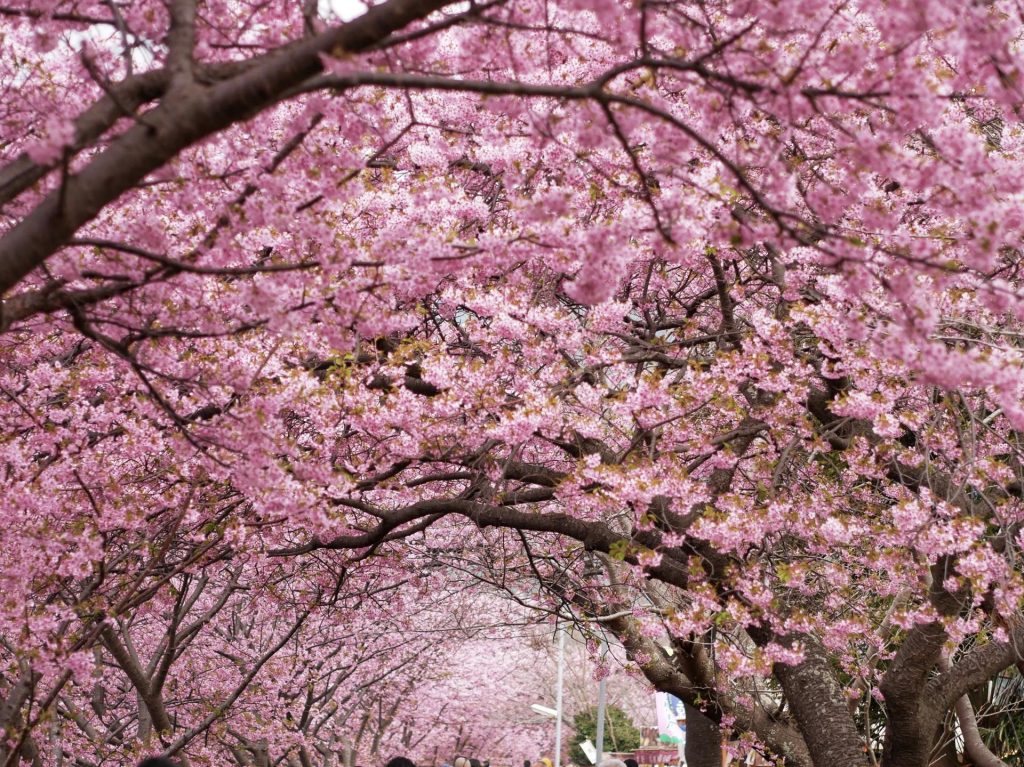
The best way to get to Kawazu is the train to Kawazu Station on the Izukyu Line. You can also travel in style on the JR Odoriko Limited Express Train direct from Tokyo, Shinagawa, Kawasaki and Yokohama stations.
While it’s recommended to rent a car, the town itself is walkable and there are buses direct to attractions such as Kawazu Nanadaru Falls (one way costs ¥670) and local trains.
As Kawazu has long been a beach, mountain and hot spring resort, there are many types of accommodation including traditional ryokan with hot springs, backpacker guesthouses and family-friendly B&Bs.
For more information, visit Explore Izu.
Travel in Izu Kawazu




